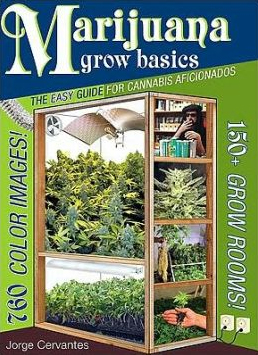
by Jorge Cervantes
Vegetative Growth
Vegetative growth is maintained by giving plants 18-24 hours of light every day. As the plant matures, the roots take on specialized functions of transporting and storing food. The root tips push farther and farther int the soil in search of more water and food. The delicate root hairs actually absorb water and nutrients. Delicate root hairs will dry up and die without water. They are very frail and are easily damaged by light, air, and bumbling hands if moved or exposed. The stem also grows upward producing new buds along the stem. The central or terminal bud carries growth upward; side or lateral buds turn int branches or leaves. The stem carries water and nutrients from the roots to the growing buds, leaves, and flowers. If the stem is bound too tightly by string or other tie-downs, it will cut the flow of life-giving fluids, thereby strangling the plant. The stem also supports the plant.
Often indoor plants develop weak stems and may need to be staked up, especially during flowering. Bending and training plants also makes best use of light indoors.
Chlorophyll (the substance that gives plants their green color) converts carbon dioxide (CO2) from air, water, and light energy into carbohydrates and oxygen. This process is called photosynthesis. Tiny breathing pores called stomata are located on the underside of the leaf and funnel CO2 into contact with the water. The stomata open and close to regulate to flow f moisture, preventing dehydration. The stomata also permit the outflow of water vapor and waste oxygen.

